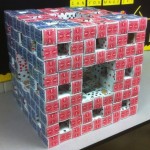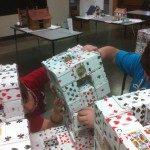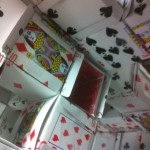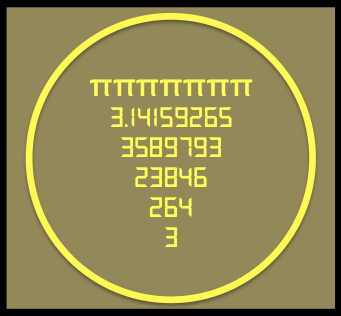the menger sponge with playing cards
An activity chosen by my students during the 2012-2013 school year was to build a level 2 Menger Sponge with playing cards.
The relevant mathematical concepts illustrated by the activity can be found in “Expectations from Principles and Standards for School Mathematics Content Standards: Grade 4.” The three major relevant concepts included working with estimation and multiplication to determine how many cards and how many decks of cards would be needed for the level 2 Menger Sponge project, analyzing attributes of three-dimensional shapes and developing vocabulary to describe the attributes, and recognizing geometric ideas and applying them to problems in the classroom or real life.
When students decided they wanted to build a Menger Sponge, first I required them to figure out how many cards we would need. Second, particularly during the build, students would refer to a “face” and or an edge or a vertex piece. Third, students recognized that each cube needed to be comprised of “mostly” straight folds. Otherwise, the cubes would not fit together to form a level 1 sponge without falling apart. Most importantly, students collaborated at all stages of the project.
This activity was inspired by Dr. Jeanine Mosely’s work building a level 3 Menger Sponge with business cards. The first time I saw the idea was during a presentation in Atlanta, Georgia at Gathering for Gardner 10.
At the end of our project, we used more than 2700 cards.
Find additional photos here.
References:
Menger Sponge from The Institue for Figuring // Online Mathematical Paper Folding http://theiff.org/oexhibits/menger02.html Accessed 10 May 2013.
Menger Sponge from Wikipedia http://en.wikipedia.org/wiki/Menger_sponge Accessed 10 May 2013.
Menger Sponge from WolframAlpha http://www.wolframalpha.com/input/?i=Menger+sponge Accessed 10 May 2013.
Weisstein, Eric W. “Menger Sponge.” From MathWorld–A Wolfram Web Resource. http://mathworld.wolfram.com/MengerSponge.html Accessed 10 May 2013.












